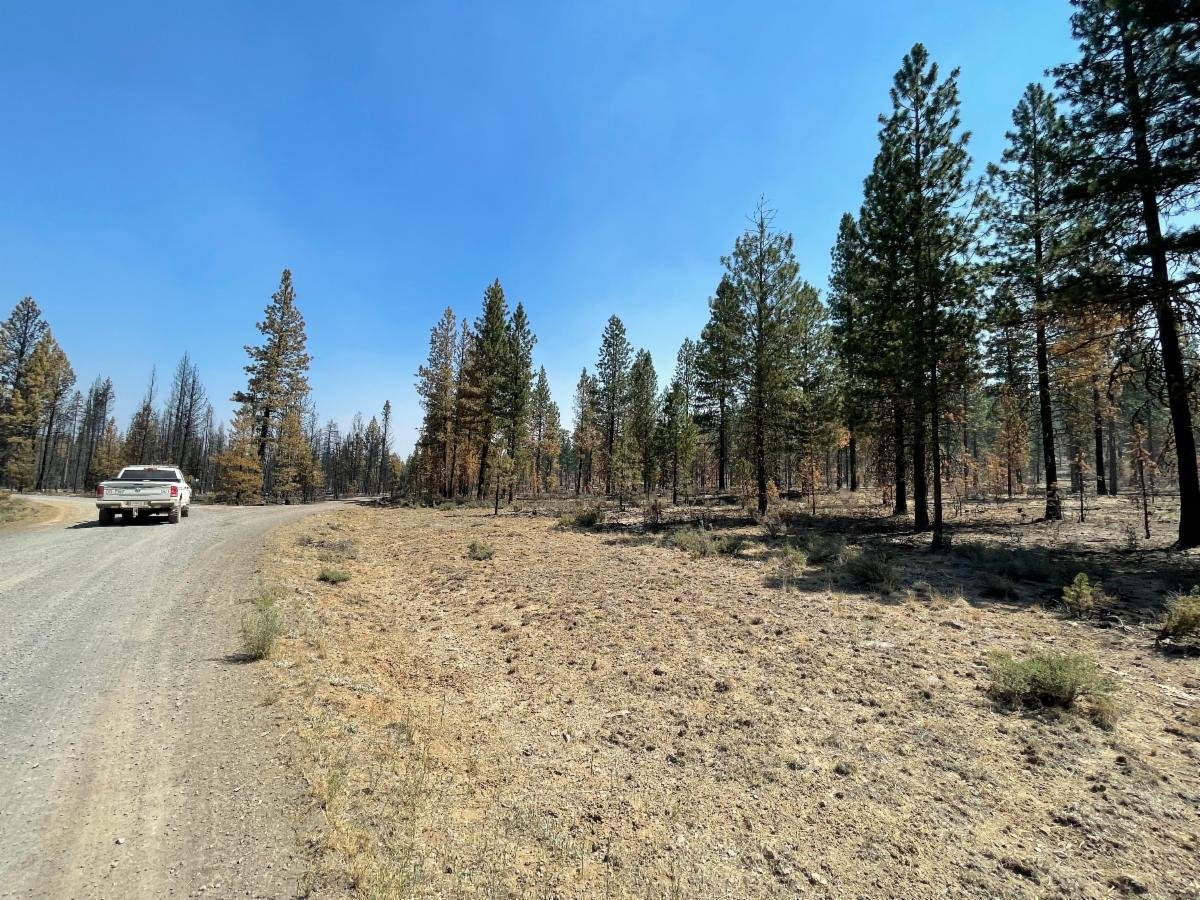FS: Fuels treatment areas are ‘green islands’ in Bootleg Fire zone

'Years of hard work have paid off,' officials say
BLY, Ore. (KTVZ) -- The Bootleg Fire started on the Chiloquin Ranger District of the Fremont-Winema National Forest on Tuesday, July 6. The lightning-sparked fire was first reported as a "small smoke" on Fuego Mountain, white in color, and estimated at one-quarter acre in size.
But the smoke and fire grew rapidly in intensity, said Owen Fabrio-Emanual, reported the fire from his post at the Spodue Fire Lookout.
“The fire behavior was extreme within five minutes of the first report. The fire had jumped into the crowns and trees began torching within the first 30 minutes,” he said.
Owen said he'd reported multiple other fires since he started his lookout duties this June but he could tell that this fire behaved different than others. When wildland fire fighters arrived, they confirmed that this was going to be no easy fight.
Initial attack plans focused on keeping the fire as small as possible while keeping the safety of the fire crews as the top priority. The fire behavior and intensity outmatched the lines that were constructed numerous times the first day of battle.
Single Engine Air Tankers (SEATs) were deployed from the nearby air tanker base, but the fire retardant did little to slow the spread of this fire.
With near record-breaking temperatures and exceptional drought conditions, even historically marsh like ecosystems burned. The highwater mark of Summer Lake had receded to the point that the water line was not visible from the beachfront roadway.
Fremont-Winema National Forest wildland fire crews had been fighting fire consistently since March. As the fire fight transitioned from initial to extended attack on July 8, fire crews and managers looked to former fuels treatment areas for potential suppression opportunities.
In the vicinity of the advancing flames was the Black Hills Ecosystem Restoration Project area, including the West Spodue prescribed fire project, which was designed in collaboration with the Klamath Tribes and many other cooperators including local landowners.
The Klamath Tribes maintain interest in the preservation of bitter brush on their ancestral lands, because of its cultural significance to the tribe. Fire managers designed the roughly 7,000-acre prescribed fire project to help protect the private timber lands and community of Sycan Estates.
Fuels treatments in this area have included fuels reduction with both mechanical equipment for thinning and prescribed fire. While there was an especially short window to safely complete prescribed fire during the spring of 2021, those areas treated fared well during the fire.
The difference between treated and untreated lands is clearly noticeable, officials said in a news release Thursday.
At the intersection of Road 3462 (known locally as the Godowa road) and the 194 Road, public lands impacted by the fire on the Fremont-Winema National Forest, the value of fuels management and treatment is clearly displayed.
Looking north, toward the untreated lands, very little remains besides the charred remnants of an overcrowded forest. As emergency resources and fire crews continue to extinguish hot spots on the burned area, fire-blackened tree trunks and branches stand near each other and bitter brush has been transformed into ash.
In the opposite direction, the treated area reveals a low-intensity under-burn, which will add nutrients to the soil in an already rich and thriving environment.
Three deer were seen grazing in the green island preserved by the treatments, surrounded by an otherwise unhospitable land. A tree plantation established in 1983 and treated in recent years remained relatively unaffected.
While fire did establish in some of the previously treated areas, it burned the needle cast on the forest floor at a low intensity, creating ideal conditions for ponderosa pine. Limited numbers of small-diameter trees were overtaken by the flames, but the large-diameter timber remains. Years of hard work have paid off.
Planning and implementation of thinning and prescribed fire to the West Spodue tree stands has saved a portion of the Bly Ranger District on the Fremont-Winema National Forest. The hard work of our planners, foresters, fire managers and wildland fire crews has provided a place for current and future generations to enjoy.
The ecological impacts of this location will continue to provide a quality example of integrated fuels management partnerships and implementation.
The leadership and employees of the Fremont-Winema National Forest are proud of our work and thankful to our communities for their continued support.



